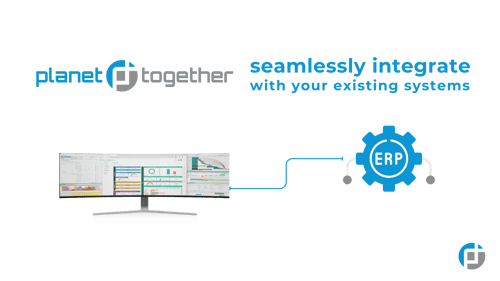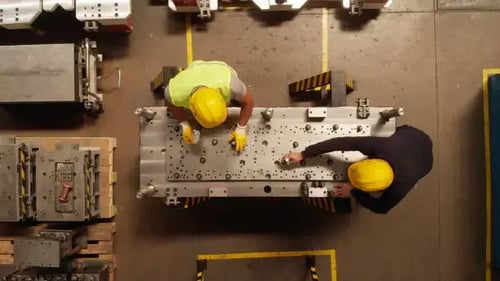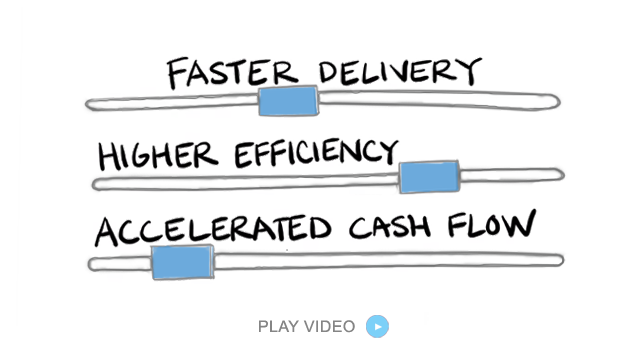Overcoming Capacity Constraints in Industrial Manufacturing: A Strategic Approach with PlanetTogether and ERP Integration
In industrial manufacturing, capacity constraints are more than just temporary bottlenecks—they can result in lost revenue, lower customer satisfaction, and missed opportunities. For Operations Directors, these constraints represent a formidable challenge, particularly as market demand fluctuates, labor dynamics evolve, and supply chains remain unpredictable.
The silver lining? Digital tools like Advanced Planning and Scheduling (APS) systems are transforming how manufacturers approach capacity planning. In particular, integrating solutions like PlanetTogether APS with enterprise systems such as SAP, Oracle, Microsoft, Kinaxis, or Aveva empowers Operations Directors to break through capacity limits with agility and foresight.
This blog explores how to tackle capacity constraints systematically, using integrated APS tools to convert operational roadblocks into opportunities for scalable growth.
Understanding the Nature of Capacity Constraints in Industrial Manufacturing
Capacity constraints occur when the demand for products exceeds a facility’s ability to produce them within a given time frame. These can stem from:
Machine availability limitations
Labor shortages or shift inefficiencies
Material supply bottlenecks
Inefficient scheduling and changeovers
Lack of visibility into upstream or downstream operations
In traditional manufacturing environments, Operations Directors often rely on static capacity planning models embedded in spreadsheets or basic ERP modules. While these tools offer historical snapshots, they lack the dynamic scheduling capabilities required to respond to real-time conditions.
The Strategic Implications of Poor Capacity Management
Failing to address capacity constraints doesn't just slow production—it ripples through the entire business. Some of the consequences include:
Extended lead times and missed customer commitments
Higher operational costs due to overtime and rush orders
Poor asset utilization and frequent unplanned downtime
Increased inventory holding costs due to inaccurate forecasts
Inflexibility in responding to market shifts or custom orders
Operations Directors are increasingly tasked with ensuring that capacity planning aligns with business growth goals, sustainability initiatives, and digital transformation efforts.

The Role of Advanced Planning and Scheduling (APS) in Capacity Optimization
This is where PlanetTogether APS shines. By offering real-time visibility, predictive analytics, and multi-constraint scheduling, PlanetTogether transforms how capacity is managed. But its true potential is unlocked when integrated with your enterprise systems—SAP, Oracle, Microsoft Dynamics, Kinaxis, or Aveva.
Benefits of PlanetTogether APS in Addressing Capacity Constraints:
Finite Scheduling: Accurately plan based on true capacity limits, considering both material and machine availability.
What-If Scenarios: Simulate different production scenarios to assess the impact of new orders or equipment downtime.
Real-Time Data Sync: Integration with ERPs ensures data consistency, pulling real-time demand forecasts and inventory status.
Multi-Plant Coordination: Manage capacity across multiple facilities with centralized visibility and coordinated decision-making.
Dynamic Rescheduling: Adjust schedules instantly based on disruptions, such as labor shortages or supply delays.

Integration: The Power of APS + ERP
Seamless integration is critical to realizing the full potential of APS tools. Operations Directors must ensure that scheduling decisions are informed by data across procurement, sales, finance, and production.
Examples of Integration in Action:
PlanetTogether + SAP: Use real-time demand planning from SAP to schedule production runs that align with customer order dates while maintaining raw material availability.
PlanetTogether + Oracle: Automatically align machine availability and maintenance windows stored in Oracle’s asset management module with daily production schedules.
PlanetTogether + Microsoft Dynamics: Improve agility by syncing work orders and real-time inventory data for accurate and achievable schedules.
PlanetTogether + Kinaxis: Integrate supply chain planning with production execution, ensuring upstream supply signals align with factory capacity.
PlanetTogether + Aveva: Align scheduling with real-time machine performance data, improving throughput and predictive maintenance timing.
These integrations eliminate data silos, reduce manual intervention, and allow Operations Directors to make decisions with confidence.
Case Example: Scaling Capacity Without Expanding Footprint
A mid-sized industrial manufacturer faced recurring production delays due to limited capacity across two production lines. While their ERP (SAP) tracked order status and inventory, the production team relied on manual scheduling.
Solution: They integrated PlanetTogether APS with SAP, enabling:
Real-time capacity visibility
Optimized scheduling that minimized changeovers
Identification of idle time in second shifts
Dynamic load balancing across the two lines
Outcome: Without adding equipment or labor, they increased throughput by 18%, reduced lead times by 22%, and improved on-time delivery metrics.

Beyond Scheduling: Strategic Advantages of Solving Capacity Constraints
Operations Directors who solve capacity issues aren't just fixing scheduling—they're setting the stage for strategic advantages:
Accelerated Product Launches: Better capacity planning enables faster time-to-market.
Resilient Supply Chains: Integrated scheduling responds faster to upstream or downstream disruptions.
Higher Customer Satisfaction: Consistent delivery timelines lead to improved client trust.
Cost Savings: Better use of labor, equipment, and materials reduces operational expenses.
Scalability: Easily model capacity requirements for future expansions or new product lines.
In today’s volatile manufacturing landscape, capacity constraints don’t have to be barriers—they can become catalysts for transformation. With integrated tools like PlanetTogether APS connected to SAP, Oracle, Microsoft, Kinaxis, or Aveva, Operations Directors can make smart, data-driven decisions that balance demand with operational reality.
By proactively managing constraints, industrial manufacturers gain a competitive edge—one rooted not in more assets, but in more intelligence.
Are you ready to take your manufacturing operations to the next level? Contact us today to learn more about how PlanetTogether can help you achieve your goals and drive success in your industry.
Topics: Industrial Manufacturing, PlanetTogether Software, Integrating PlanetTogether, What-If Scenarios, Dynamic Rescheduling, Real-Time Data Exchange and Synchronization, Finite Scheduling





















LEAVE A COMMENT